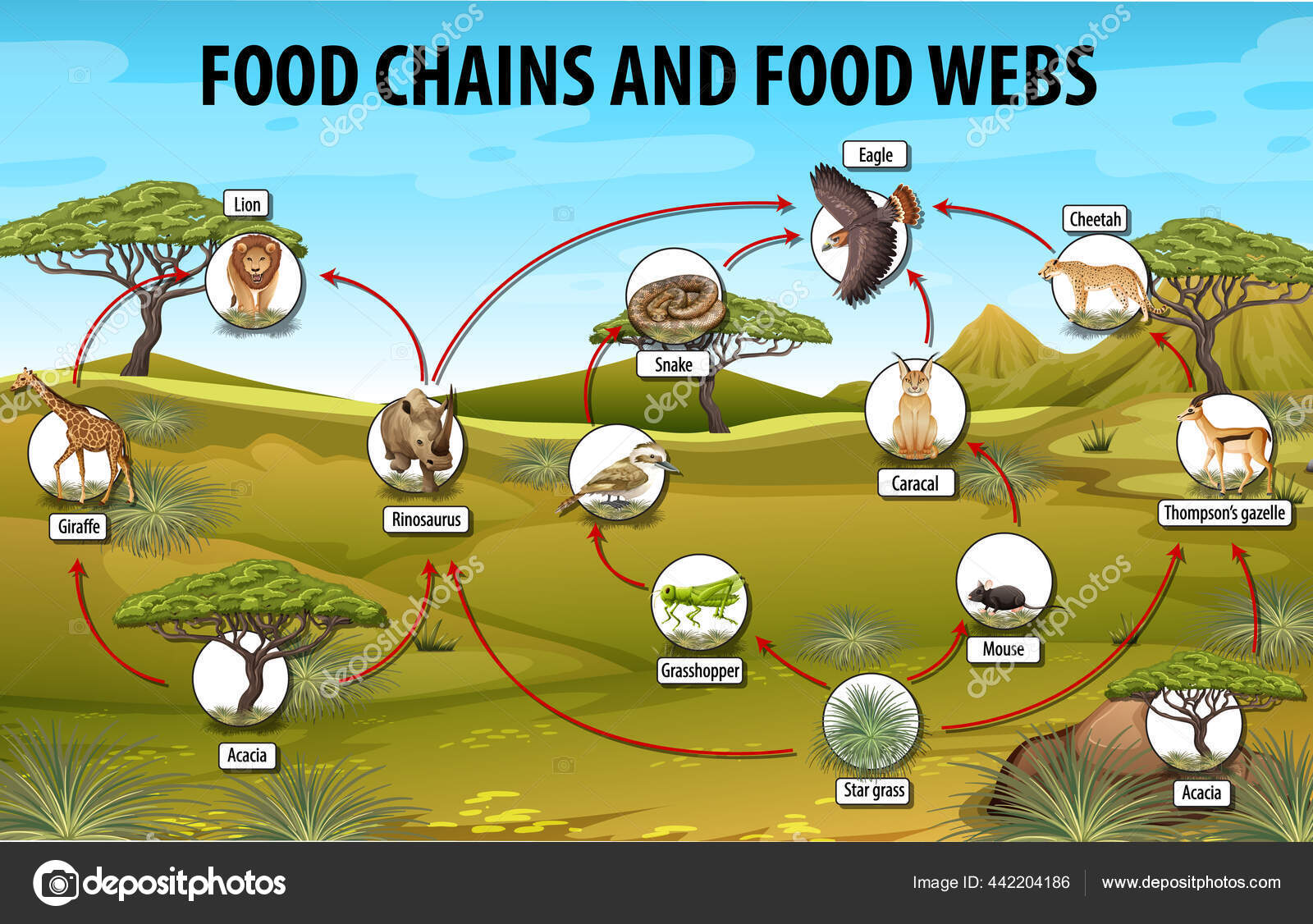Science Environment Ecology Biology Diagrams The food chain is made up of this link from producers and ending at apex predator species or decomposer species. A food chain in a grassland ecosystem starts with grass being the primary producer by trapping energy from sunlight. Insects like grasshoppers are primary consumers because they directly depend on the green plant for their food.

The grassland food chain is a dynamic and intricate system that underpins the ecological balance of this vast ecosystem. From the primary producers that capture the sun's energy to the apex predators that regulate populations, each organism plays a crucial role in maintaining the delicate equilibrium of life. Understanding the intricacies of In a grassland food chain, the grass is the producer. It produces food using the sun's energy. The primary consumers follow the producers. Insects like grasshoppers are primary grasslands consumers as they depend on the green plant for their food (herbivores). Occasionally, primary consumers are omnivores as well, such as aardvarks. A grassland food web is a complex network of interrelated food chains that illustrates the feeding relationships between different organisms in a grassland ecosystem. It showcases how energy and nutrients flow through the ecosystem, starting from producers (plants) to various levels of consumers (herbivores, carnivores, omnivores) and decomposers.

Grassland Food Chain Biology Diagrams
Now let's have a four-step grassland food chain example. In a grassland ecosystem grass is eaten up by insects; these insects are eaten by the frogs and lastly, these frogs are consumed by the birds. This food chain can be represented as: Grass → Insects → Frog → Snake → Bird In a grassland food chain, grass grows as the producer. The grass, deer and tiger form a food chain (Figure 8.2). In this food chain, energy flows from the grass (producer) to the deer (primary consumer) to the tiger (secondary consumer). A food chain in a grassland ecosystem may consist of grasses and other plants, grasshoppers, frogs, snakes and hawks (Figure 8.3). The food chain in a grassland ecosystem demonstrates the interconnectedness of different organisms and how energy is transferred through the ecosystem. Producers capture energy from the sun, herbivores consume the producers, carnivores eat herbivores, and apex predators, if present, occupy the highest position in this chain.

In a grassland food chain, the grass is the producer. It produces food using the sun's energy. The primary consumers follow the producers. Insects like grasshoppers are primary grasslands consumers as they depend on the green plant for their food (herbivores). Occasionally, primary consumers are omnivores as well, such as aardvarks. The frog (carnivores) eats the insects, the secondary The following is an example of a food chain in the grasslands: Producer: Grass; grasslands are tracts of land predominantly covered with different grass species. A food chain is the path
